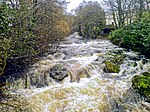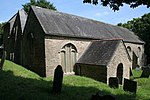SS Persier (1918)
1918 shipsMaritime incidents in December 1940Maritime incidents in February 1941Maritime incidents in February 1942Maritime incidents in February 1945 ... and 12 more
Maritime incidents in June 1941Merchant ships of BelgiumMerchant ships of the United KingdomShip infoboxes without an imageShips sunk by German submarines in World War IIStandard World War I shipsSteamships of BelgiumSteamships of the United KingdomWorld War II merchant ships of BelgiumWorld War II shipwrecks in the English ChannelWorld War I merchant ships of the United KingdomWreck diving sites in the United Kingdom
Persier was a 5,382 GRT cargo ship which was built in 1918 as War Buffalo for the British Shipping Controller. In 1919, she was sold to Belgium and renamed Persier. Between 1934 and 1941 she also held a passenger certificate. She was driven ashore on the Icelandic coast in a storm in February 1941 which put her out of action for two years. Returned to service in February 1943, she served until 11 February 1945, when she was torpedoed and sunk by U-1017 with the loss of 20 crew.
Excerpt from the Wikipedia article SS Persier (1918) (License: CC BY-SA 3.0, Authors).SS Persier (1918)
South Hams
Geographical coordinates (GPS) Address Nearby Places Show on map
Geographical coordinates (GPS)
| Latitude | Longitude |
|---|---|
| N 50.283333333333 ° | E -3.9708333333333 ° |
Address
Mothecombe
PL8 1LB South Hams
England, United Kingdom
Open on Google Maps








